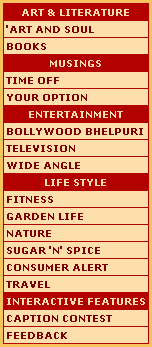 |
 |
A PIECE of crystal is a unique creation in the world of glass. In India, crystal is considered a prestigious possession because it costs several times more than a similarly shaped piece of ordinary glass. Crystal items from Czechoslovakia and Poland etc are usually of the cut glass type. However, the crystal manufactured in Sweden is in a class by itself.
The crystal glass industry in Sweden is mostly located in the southern part of Sweden. The most famous glass factories are located between the towns of Vaxjo and Kalmar. Amongst these the glassworks at Hybro, Alghult, Bergdala, Lindshammar, Orrefors, Boda, Kosta, Afors and Pukeberg are the most famous. Most of the Swedes who migrated to the USA during last two centuries belonged to this belt. |
|||||||||
| I arrived in the crystal glass country
through Gotenburg, located on the west coast of Sweden by
road. It was summer and the sight of the countryside on
both sides of the road was fascinating. We chose to stay
at Stora Hotellet in Hybro township and visited the glass
factories at Hybro and Pukeberg. These two factories
specialise in elegant tableware, bowls, wine glasses,
beautifully finished dishes, flower vases, animal and
human figures, decorative liquor bottles, candlestands,
fruit shapes, light shades, table lamp and other
glassware in shimmering cobalt blue.
Hand blowing of a glass is a living craft. Each individual piece is unique and is a testimony to the exquisite craftmanship of the artist who made it. Occasionally some irregularity or some tiny defect may be left in the glass. One can purchase a wide variety of seconds at bargain prices. The seconds also bear the manufacturing stamp of quality of the factory. Today Kosta is the oldest glass factory in Sweden. The first glass item by the blowing technique was made there in 1742. That is why Kosta is called the mother of the Swedish glass industry. We witnessed a fantastic glass exhibition held in Barghilm Castle Oland. As we entered the main hall, we were greeted by a large translucent glass rock measuring 1.5 metres by 1.5 metres. In the heritage corner made-to-order crystal pieces were displayed. A particularly beautiful and elegant piece was the replica of Lord Krishna on a golden chariot driven by four immaculately carved white horses on an ebony black pedestal. Lord Krishna was depicted in a light brown shade while Arjuna had been given sparkling white shade. The penant on top of the chariot was in a pleasing orange colour. The cost of this rare piece was $ 4500. I also spotted two one-foot-long crystal glass Bengal Tigers filled with 24 carat pure golddust costing $ 1000 each. The manager also informed us that they had received special orders from Boris Yeltsin, the Soviet Duma, the Japanese Royal Household as well the British monarchy. |